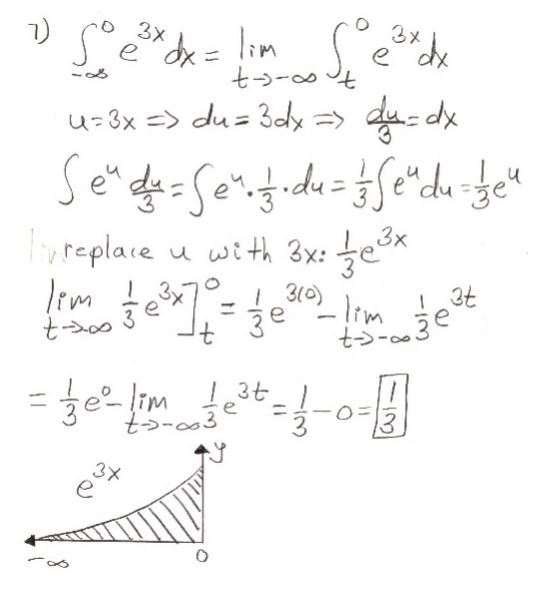
Step 1: Identifying the Function for Integration
We start by identifying the function we aim to integrate, which is \( e^{3x} \). This function is an exponential function with a base of \( e \) and an exponent of \( 3x \).
Step 2: Setting Up the Integral
We set up the integral with the given limits, which are \( x = -\infty \) and \( x = 0 \):
\[ \int_{-\infty}^{0} e^{3x} \, dx \]
Step 3: Applying Limits for the Improper Integral
Since the integral has an infinite lower limit, it is an improper integral. We use limits to evaluate it:
\[ \lim_{{a \to -\infty}} \int_{a}^{0} e^{3x} \, dx \]
Step 4: Finding the Antiderivative
The antiderivative of \( e^{3x} \) is \( \frac{1}{3} e^{3x} + C \), where \( C \) is the constant of integration.
Step 5: Applying the Upper and Lower Limits
We apply the upper and lower limits to the antiderivative:
\[ \left[\frac{1}{3} e^{3x}\right]_{a}^{0} \]
Step 6: Evaluating the Limits
After applying the limits, we find:
\[ \lim_{{a \to -\infty}} \left(\frac{1}{3} e^{3 \cdot 0} – \frac{1}{3} e^{3a}\right) = \frac{1}{3} – 0 = \frac{1}{3} \]
Step 7: Final Result and Interpretation
The integral converges to \( \frac{1}{3} \). This result is interesting because it shows that the function has a finite integral over the given range, highlighting its rapid decay as \( x \) approaches negative infinity.
